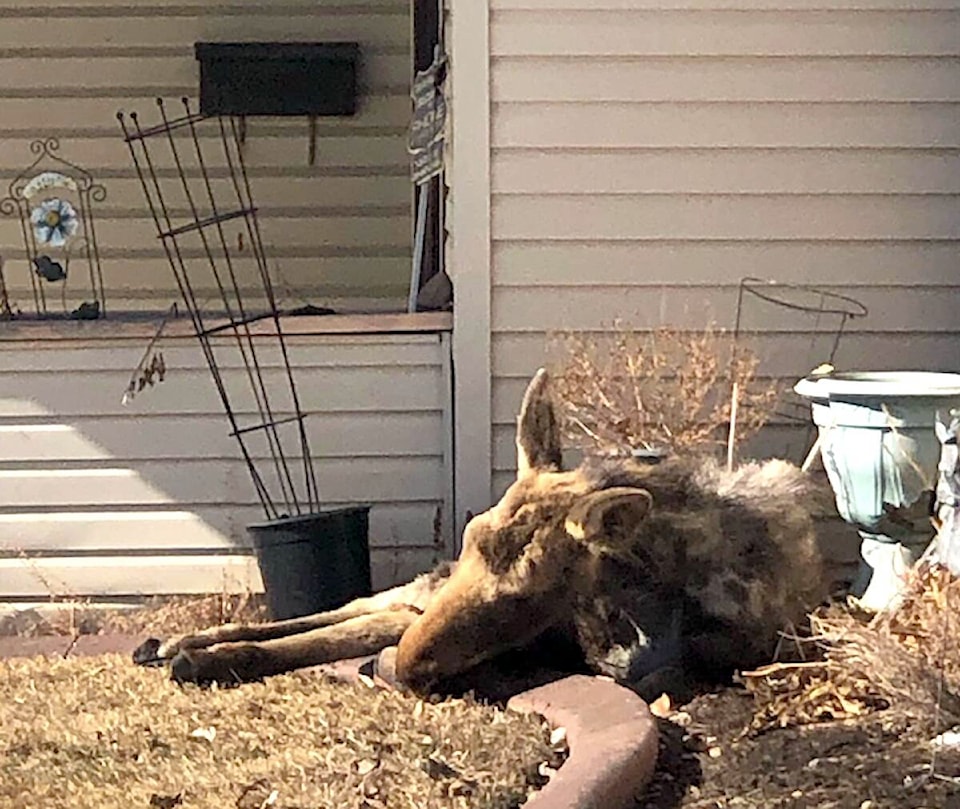Red Deerians are encouraged to share their opinions on urban wildlife by taking a new survey.
This week biology and psychology departments at Red Deer Polytechnic launched the Urban Wildlife Survey. The web survey aims to understand and investigate the perspectives and preferences of Red Deer residents regarding urban wildlife, parks, and related experiences.
Ashley Larsen-Stewart, fourth-year RDP bachelor of psychology student, said Red Deer has a huge wildlife corridor. Learning how to co-exist is necessary, and the more people who do the survey, the better.
“The more data we have, the stronger our results will be. It’s really important for future planning and policy around the city and wildlife in the city,” said Larsen-Stewart, who prepared the survey and will compile the data.
The survey only takes a maximum of about 10 minutes to finish, but the results could help reduce wildlife-human conflicts by understanding animal populations and residents concerns.
The survey also includes questions about plants as there are invasive species.
Related:
Two moose are now getting cosy in Red Deer — but give them a wide berth, says wildlife expert
Larsen-Stewart said knowing the neighbourhoods that participants call home will show if there are areas with a lot of wildlife conflict so possible solutions can be found.
Findings and conclusions that come from analyzing the survey data will be shared with the City of Red Deer and the community.
She said the results will be compared to similar work out of the University of Lethbridge that was conducted during the Covid lockdown. That survey was open to people in Lethbridge, Calgary and Red Deer. The new survey will identify if attitudes have changed.
Survey results may also help show the variety of wildlife in Red Deer, she added.
“It will be interesting to see if people are seeing new species in Red Deer. We had a bear last year. That was pretty unique for Red Deer.”
Related:
Decorating trees along Red Deer’s trails is a wildlife hazard: City
Over the past several months, RDP biology instructors Sandra MacDougall and Dr. Gabriela Ibarguchi and their students have deployed wildlife monitoring cameras throughout the city’s green belt areas to monitor the presence, movement and distribution of wildlife.
Since 2023, MacDougall has been the principal investigator for the Red Deer Urban Wildlife Study and objectives include:
• Compile and analyze historical wildlife sightings and conflict data in Red Deer.
• Study wildlife movements and distribution through using remote cameras and aerial drones in the green belt areas of the city.
• Make recommendations to reduce urban human-wildlife conflict.
The Urban Wildlife Survey’s results will help to understand the attitudes and perceptions of urban residents towards wildlife which is important for human-wildlife coexistence planning.
Survey posters, which include a QR code to access the survey, are being put up around the city. Survey participants must be 18 years or older and Red Deer residents.
Survey data will be compiled this summer.
szielinski@reddeeradvocate.com
Like us on Facebook and follow us on Twitter
